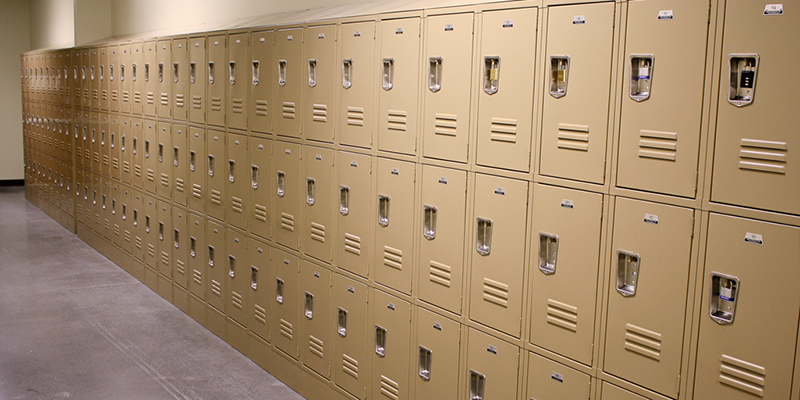Lockers are not only for school hallways anymore. They can be installed in libraries, hospitals, office settings, and so many more places. No matter where they are going, one of the most common questions we hear is, “how much do lockers cost?” Of course, there’s no one answer, but this article can help you understand what goes into the cost of lockers.
In determining how much your project's locker costs will be, the main variables are materials you select, the type of locking system used, the size of the locker (and the project) and any customizations you might add (such as antimicrobial finish to combat virus spread). This discussion considers the options from entry-level option to the more expensive.
Materials
The most basic locker to construct is the metal locker you might be visualizing from your days back in school. Yes, these traditional lockers are still available. These lockers, known in the business as knockdowns, are the entry-level option. Yet they are durable and can be painted in any number of colors to suit your environment’s aesthetic.
Tip: Don’t worry, when we say knockdown, it’s not because they are easy to topple. It’s because they come to you unassembled. Sort of like getting all the pieces of your next dining table in the box from Ikea.
These knock-down lockers can also be coated with enamel spray-on paint to cut erosion. Plus, there is an electrostatic discharge (ESD) paint available to prevent static build-up if the metal lockers are going to be used in areas with sensitive electronics or even, in military use, explosives.
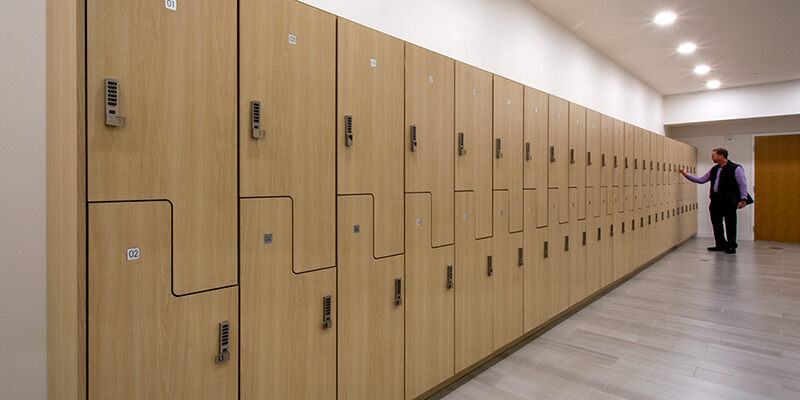
Metal lockers can also be upgraded with an anti-microbial finish, which is gaining momentum as our health and wellness demands are shaped by the pandemic. These finishes are typical add-ons as well on metal-framed lockers with laminate fronts.
Yet even with the metal locker category, not all storage is created equal. There’s also a welded option, which is more expensive. When they arrive to you for installation, all the pieces are welded together already. The back, sides, top, and any interior partitions are typically welded together before the lockers are even painted. These can be used for all sorts of applications, and can also be galvanized to prevent rust.
Cost of Custom Materials
If you’re ready to pay more to get the best-suited storage for your needs, look at customized lockers. Many manufacturers start with the welded locker structure but then integrate other materials to suit particular needs.
The law library, for instance, might want wood finishes. These are cabinet-grade products, which makes them more visually appealing but also more expensive. There is a plastic laminated wood finish. This is the least expensive non-metal option, and there are generally many finish options to choose from. However, humidity can be a problem.
So, if you’re going to have lockers outdoors or in a high humidity environment, you might prefer solid plastic. A challenge is they can be more difficult to maintain. The best, and not surprisingly most expensive, for outdoor or high humidity environments, is phenolic paneling. This is very durable offering UV- and graffiti-resistance.
Another customization to consider is expanded metal or diamond plating. We see this a lot in athletic training spaces or public safety personal duty lockers to help with ventilation. For several top university sports programs - and some pro teams, we’ve installed lockers that look good enough to support recruiting efforts too.
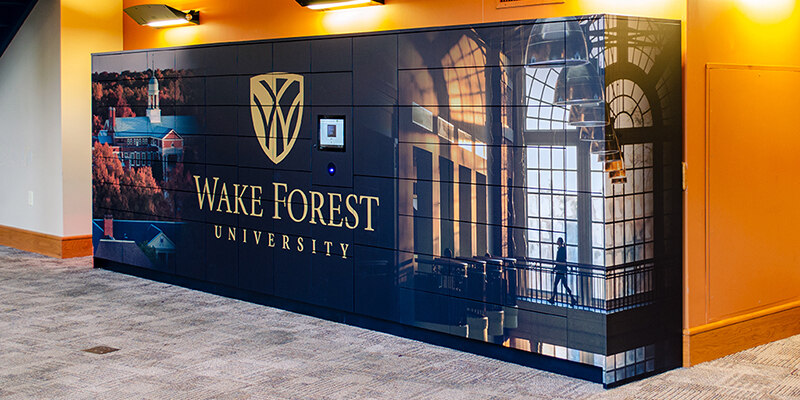
Stainless steel lockers are most common in healthcare settings or lab clean rooms. They are more expensive, but they offer the best antimicrobial properties. It all depends on the level of cleanliness your situation requires. Of course, you can’t count on the antimicrobial finish to do all of the work. You’ll still need a plan in place to clean the lockers too!
Lock Costs
Even after you’ve selected the material, there are still other areas where you can control locker costs. Your choice among many different lock options will also have an impact on price.
Keyed locks are the best option for the buyer looking for a low-cost solution. Yet you’re sacrificing security and control. You’ll also need to maintain a key inventory with this entry-level lock option.
The next level up is mechanical or rotary locks. There are abundant options available from several brands. Generally, you’ll be looking at lockers that come with five to seven pre-set combinations. A keyed override is available but managing the combinations and changing them can be a challenge. That’s why you’ll see this type of lock used more often in schools or offices assigning lockers to employees for the long term.
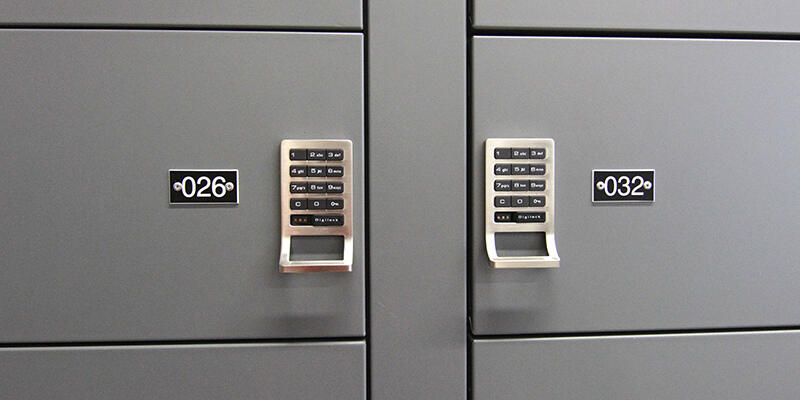
Then, there are the applications that need mechanical or rotary lockers that can change frequently. Fitness centers and public buildings are common sites for the multi-use locker. These locks are more expensive than the traditional rotary lock, but half the price of electronic locks. Yet you’ll need to assign someone to manage the lock system and the master key to be able to override the lockers if a combination is lost or forgotten.
Coin-operated lockers are still available too. This might use actual coins or custom “coins” issued by the end-user. These are common in university fitness centers or at public gyms or other attractions. Since these lock mechanisms need to be big enough to fit the coins, they are more work to maintain and clean. They also require user interaction with someone on your staff to get the coins.
User Experience
Electronic locks are more expensive, as they require batteries or another power source. This can make installation more complicated. Another option is the RFID, scan or Bluetooth lock. These come in all shapes and sizes (and at all levels of locker cost). They can involve more effort at the outset from the end-users in customizing the system to their particular use, but they tend to offer a better user experience.
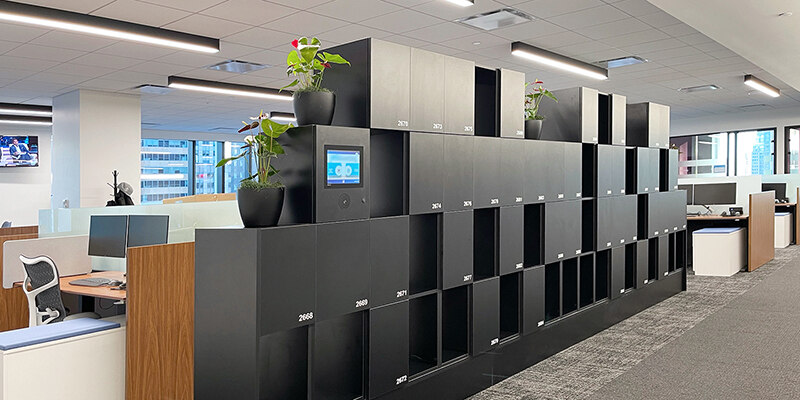
Smart locks, with software involved, take these options to the next level. At the same time, the business can gain access to more data about locker usage. With building management software integration, it is possible even to streamline cleaning schedules and isolate lockers for social distancing purposes.
Tip: Lockers are trending right now in many work environments as they support clean desk policies and give the remote worker who only comes in sporadically somewhere to safely secure their stuff.
Of course, each lock option will have a different cost. Our sales experts recommend you weigh what end user experience you want to offer. This means thinking about ease of access and ADA compliance. The environment will matter too. For example, electronic locks aren’t typically the best option for steamy shower areas. But you knew that already.
Size Impacts The Cost of Lockers Too
It’s no surprise, of course, but size will matter. Your Patterson Pope representative will talk with you to determine not only the type of materials used and the locks of choice but also the locker size and the install location.
The size of the order can make a difference as well. Buying in bulk will save you money. Certainly, if you have plans to buy 100 lockers it can be worthwhile to do it all at once. If you do it in two orders, you’ll be paying for freight and installation twice — and that can be at least 50% of the locker cost!
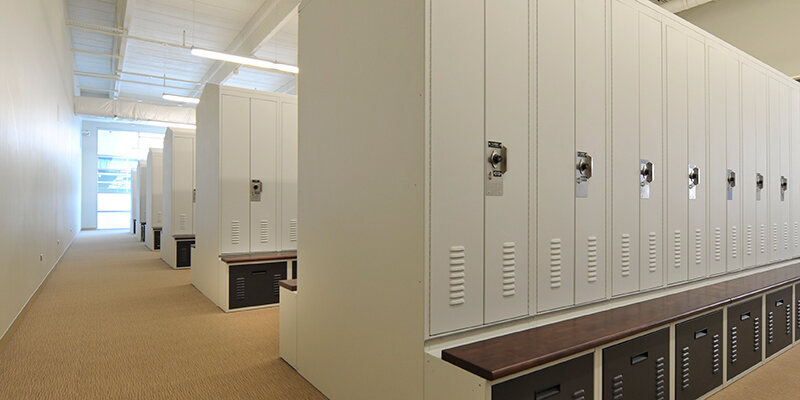
Tip: Institutions of higher education looking for additional revenue streams are offering lockers around campus. Install lockers with plugs to power students’ many devices while they’re in class or eating lunch. You can put the lockers anywhere to give your community anytime access in high-traffic areas such as libraries, academic buildings, cafes or student unions.
It starts with your application
Before trying to answer “how much do lockers cost?” our team has to ask you questions too. When it comes down to it, the big thing that will impact how much your lockers cost will be is how you’re using them. Throughout this article, we’ve touched on examples of different applications that would suggest varied approaches to materials, finishes, locks, sizes and more.
Even within the same building, different lockers need to meet varied expectations. Take a commercial building. The lockers behind-the-scenes holding maintenance equipment don’t need to have the same look or locks as those that are in the front lobby for customers or guests.
Or compare the lockers at a city swimming pool to those at a top-tier athletic institution that needs to recruit the best young talent. The first might be fine with simple steel lockers with multi-use locks. But, when you take a look at the Oregon University locker room you see what we mean about customization! Instead of the basic metal knock-down locker, the school’s football team went with custom-designed smart lockers to give the entire locker room a high-end feel.
Elsewhere on campus, institutions of higher education looking for additional revenue streams are installing day-use lockers in high-traffic areas such as libraries, academic buildings, cafes or student unions. These can offer a basis convenience, or they might be installed with electronic plugs to power students’ many devices while they’re in class or eating lunch.
The Next Step in Storage: Smart Lockers
This blog hasn’t touched too deeply on smart storage, other than to say these lockers typically have the most expensive locker costs. Yet they are a great option to consider. After all, unlike traditional lockers, they provide superior customizations and combine technology and software to inform building management too.
Our customers have seen the benefits of smart lockers for day use, exchange of goods, package delivery and personal use applications. Plus, they support a safe and clean environment too. But we’ll talk more about the pros and cons in our upcoming “How Much Do Smart Lockers Cost?” article.
Ultimately, the main piece of advice we offer those thinking about the cost of lockers is to not avoid buying based on price alone. Not unless you plan on replacing your lockers again soon. You want to balance the needs particular to your application and environment to find the best choice for your budget.
We can help. Contact our storage solution experts today!










